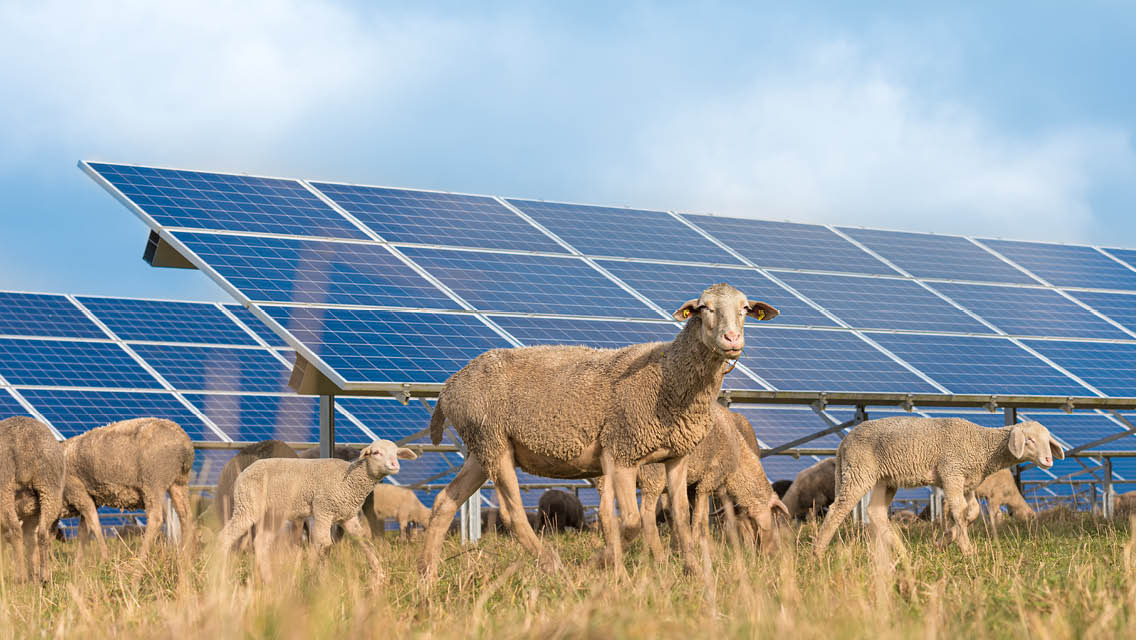Our digital world today is quick, handy, and tidy. There’s little paper waste, and fewer bulky file cabinets and bookshelves are overflowing with reference material; it’s all streamlined and contained within the latest sleek electronic device.
Hidden behind the digital curtain, though, is a vast physical reality. It’s a euphemism to say your information is “in the cloud”: In fact, the digital universe is stored in massive data centers and flows through a physical infrastructure that requires nearly immeasurable quantities of electricity and water, while also generating heat and greenhouse gases that contribute to the climate crisis.
Digital might seem clean, but it’s not green.
Still, one of the great advantages of the digital universe, ironically, is its ability to quickly and efficiently spread knowledge about the climate crisis, calling people to action, explains environmental activist Bill McKibben, author of The End of Nature.
“Since digital is not going away, our job is to make the best use of it we can and tame its nastiest effects,” he says. “I console myself that it is a new technology, and perhaps we will figure out how to master it before it masters us, but I am by no means certain. . . .”
Delve in with us as we take a closer look at some of the ecological costs of our digital actions.
Every message we send . . .
A single text message produces 0.014 grams of carbon dioxide (CO2) greenhouse gas. While that’s a teeny-tiny amount, an estimated 18 million texts are sent worldwide every minute — nearly 9.5 trillion texts yearly as of 2019.
The majority of these digital actions are powered by electricity — and 63.3 percent of the world’s energy still comes from fossil fuels.
Similarly, each tweet emits 0.02 grams, but more than 500 million tweets are sent daily, producing 10 metric tons of CO2 every day. An email costs between 0.2 and 29 grams, and an estimated 333 billion emails were sent daily in 2022.
Each minute spent on Facebook, Instagram, TikTok, or other social media generates 0.46 to 2.63 grams of CO2 and every one of the 4 million Facebook likes clicked every minute uses electricity.
Each day, 4 petabytes of new Facebook data is generated — equivalent to 80 million tall file cabinets or 2 trillion pages of standard printed text. And warehousing old texts, emails, social-media posts, websites, and other digital information bears a cost, too.
Every online search we make . . .
Digital-tech use accounts for 4 percent of greenhouse-gas emissions worldwide. And while that might not seem like a lot, it’s more than is produced by one of the worst climate-crisis culprits: the airline industry. And digital energy consumption is growing by 9 percent annually.
“Digital consumption is currently highly polarized,” according to a 2019 report by the Shift Project, a French climate-crisis think tank. High-income countries use far and away the majority. As of 2018, each American household owned an average of 10 digitally connected devices and consumed 140 gigabytes of data per month; the average person in India, by contrast, owns one device and uses 2 gigabytes.
Every file we save to “the cloud” . . .
Data centers emit 0.5 percent of total U.S. greenhouse-gas emissions. That might seem minuscule, but data centers use as much electricity each year as all of New Jersey, according to a 2021 report in Environmental Research Letters.
To support cloud computing, data flow, indexing, video gaming, and the metaverse, Google had 23 data centers worldwide as of mid-2022; Amazon operated more than 125. And they’re small potatoes compared with other companies you’ve probably never heard of, like China Mobile and China Telecom. Data centers globally use some 200 terawatt hours each year — more than the national energy consumption of many countries. They account for 1.8 percent of all electricity use in the United States — as well as billions of gallons of water for cooling the heat they generate.
The good news: Though the amount of data workload has increased by some 550 percent in the last decade, the centers’ electricity consumption has risen only 6 percent, thanks to energy efficiency and storage-drive density.
Every Bitcoin we use . . .
Each digital Bitcoin transaction consumes 1,368 kilowatt hours — which is more than the average American uses in a month. Cryptocurrency is “mined” by computers solving complex mathematical equations that require vast amounts of energy. This, in turn, results in immense greenhouse-gas emissions: as of September 2022, 70.79 metric tons of CO2 annually — a carbon footprint comparable to that of Greece.
Every digital device we discard . . .
More than 50 million metric tons of e-waste — discarded cellphones, computers, screens, and more — was generated worldwide in 2019, according to a United Nations report.
Less than 20 percent is formally recycled; the remainder goes to landfills or is shipped to developing countries, where it is harvested by hand to reclaim gold, platinum, cobalt, and other valuable materials. This exposes workers to toxic and carcinogenic substances and contaminates soil and groundwater.
At the same time, lithium and cobalt, as well as rare-earth “conflict” elements that are costly to mine, are rarely recovered. (For more on these so-called conflict minerals, see ELmag.com/digitalcosts.)
Every video we stream . . .
Video streaming ranks No. 1 among all data flow, accounting for an estimated 80 percent of our use; the rest includes websites, data access, and video games.
Videos are stored in data centers and then transferred on demand to our devices via networks, all of which use electricity. Online video streaming emits as much CO2 annually as all of Spain.
Video accounted for more than 300 metric tons of CO2 in 2018 alone — 1 percent of global emissions. And porn amounts to 27 percent of all online video traffic.
What Can We Do?
We’re unlikely to switch off all our tech, but we can educate ourselves and use it more wisely. We can strive to use tech less. We can opt for solar chargers. And we can seek to recycle rather than just dump old tech. (For ideas on streamlining your digital life, “How to Become a Digital Minimalist“.)
“Even though none of us are going to be able to show how we single-handedly transformed the whole world, we can become part of a movement, the power of which is far more than the sum of the parts,” writes Mike Berners-Lee, author of The Carbon Footprint of Everything.
On the flip side, the flow of ideas via the internet has been crucial to awakening people to our environmental distress, says McKibben.
“The digital world has definitely made it easier to organize people to fight against the climate crisis,” he explains. “But, of course, it’s also made it much easier to distract people from the great issues of the moment, and to confuse and mislead them. On balance, it’s doubtless done more harm than good.”
This article originally appeared as “Our Digital Carbon Footprint” in the March 2023 issue of Experience Life.





This Post Has 0 Comments